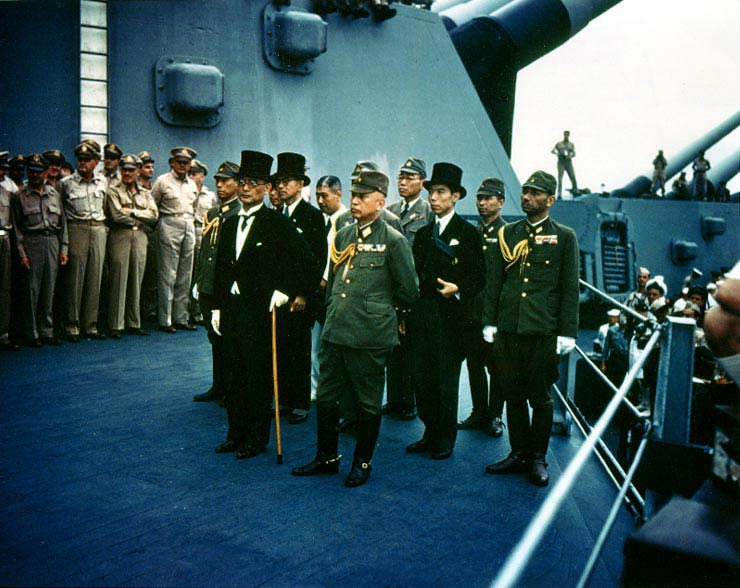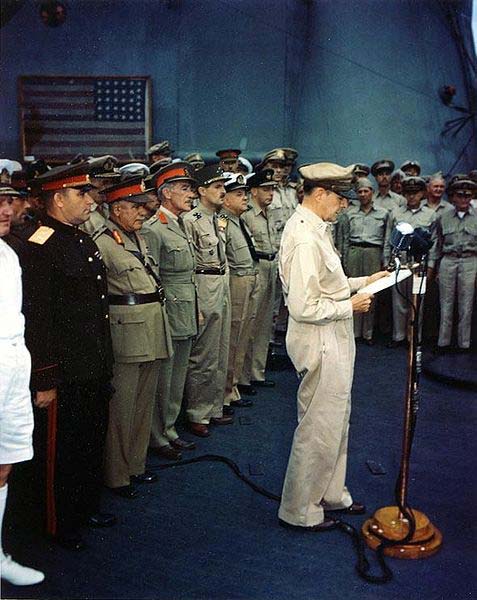The “Japanese Instrument of Surrender”, which was signed and issued on September 2, 1945, marked the end of World War II. Several representatives from various countries signed the Instrument of Surrender, and among these nations include Republic of China, Dominion of Canada, New Zealand, Government of the French Republic, USSR, Commonwealth of Australia, United Kingdom, Kingdom of the Netherlands, the United States, and the Empire of Japan.
The Purpose of the Instrument of Surrender
The written agreement that caused the surrender of Japan formally marked the end the war. A number of nations of signed this agreement on the USS Missouri’s deck, in Tokyo Bay. This momentous day in history is also known as “Victory over Japan.” However, this designation is often used to pertain to the date when the Imperial Rescript of Surrender, Emperor Hirohito Gyokuon Hoso, announced the acceptance of terms stipulated in the Potsdam Declaration. This announcement was broadcasted over the radio at noon time (Japan Standard Time) on August 15, 1945.
This ceremony was held aboard the USS Missouri deck, and it lasted for about twenty-three minutes. It was broadcasted throughout the world, and was signed by a number of representatives from several countries. Mamoru Shigemitsu first signed the agreement at 9:04 in the morning. Then, the Chief of the Army General, Yoshijiro Umezu, followed suit and signed the instrument, as well. The next person to sign was Douglas MacArthur, who was the General of the Army of the United States. He also served at the Allied Powers’ Supreme Commander.
The Final Stage of World War II
It was on September 2, 1945 that World War II officially ended. This dreadful event in history ended after the signing of the Japanese Instrument of Surrender, which was on the USS Missouri battleship anchored in the Bay of Tokyo. Distinguished personalities were on board the battleship to sign the agreement. Among these government officials include Mamoru Shigemitsu, who signed on behalf of Japan’s emperor, as well as Yoshijiro Umezo, the Army General of the Empire of Japan.
Douglas MacArthur, who was the Supreme Commander of the Allied Forces, conducted this momentous ceremony. Chester Nimitz, who was the Fleet Admiral of the United States, signed on behalf of the U.S. He was also the Commander-in-chief of the Pacific Ocean Areas and Pacific nations. Several other officials that signed the instrument included Hsu Yung-Chang, Lt. General Derevyanko, Bruce Fraser, Moore Cosgrove, Air Marshall Ishitt, C.E.L Heifrich, Jacque Lo Clerk, and Sir Thomas Blamey. These individuals were distinguished officials of New Zealand, Australia, Canada, China, France, Soviet Union, the Netherlands, and United Kingdom.
Hope for A More Peaceful World
As General Douglas MacArthur commenced the occasion, he explained the purpose of the event and expressed his optimism for the future. He shared his thoughts and aspirations of ensuring peace, justice, tolerance and freedom in the world. Admiral Nimitz also imparted his sentiments, as he recalled the bravery of those who fought in the war. He also expressed mankind’s solid obligation to make this world a safer and better world for all people.


